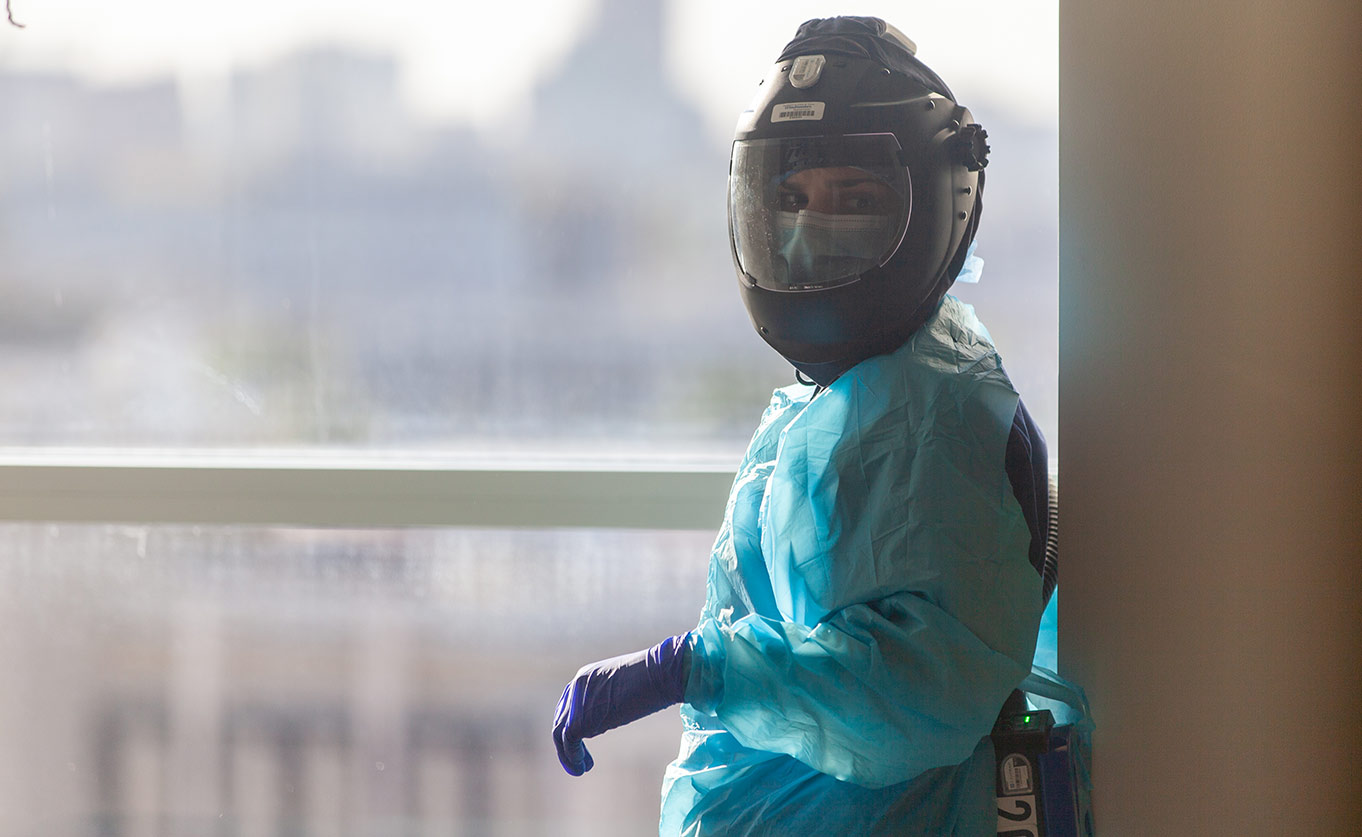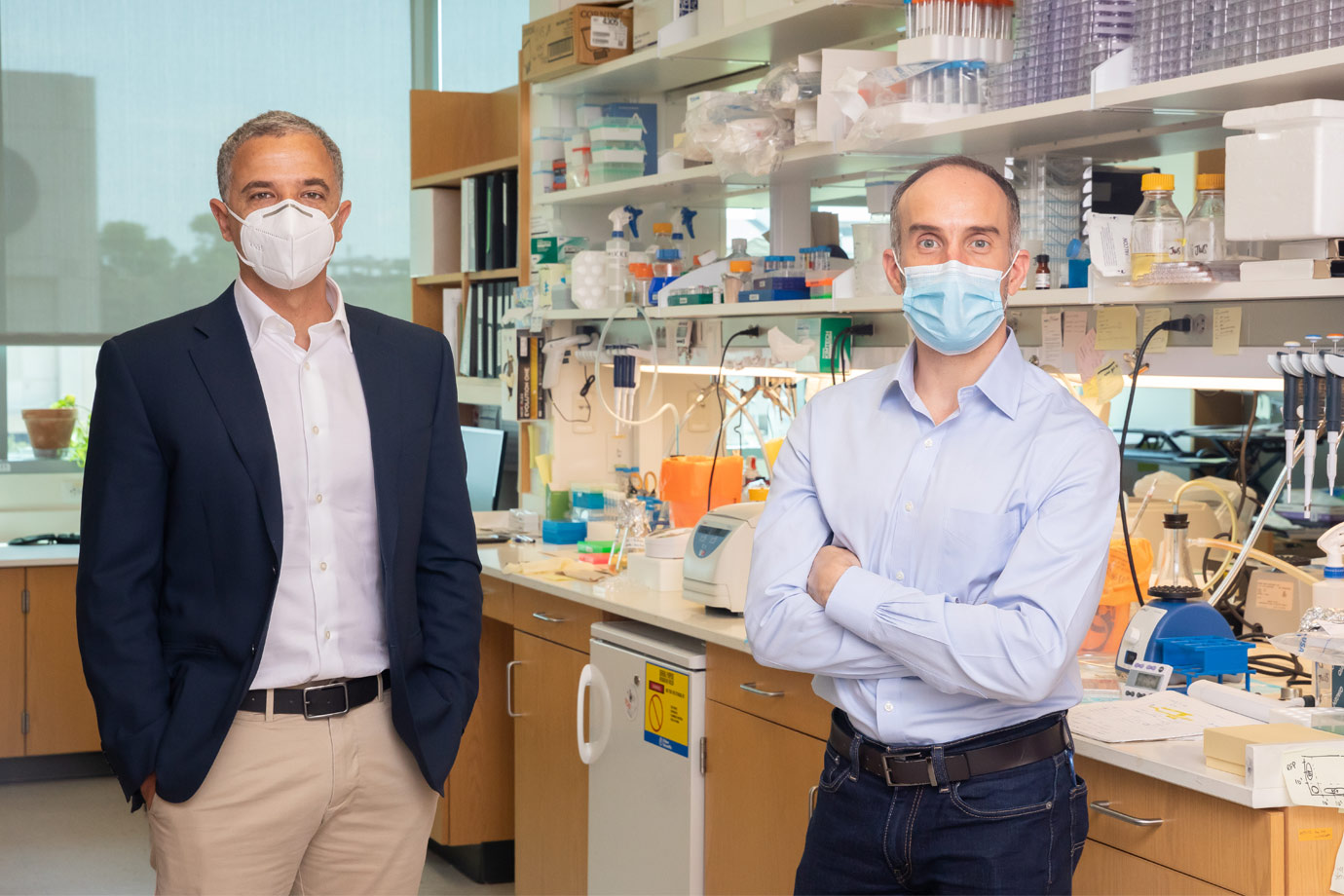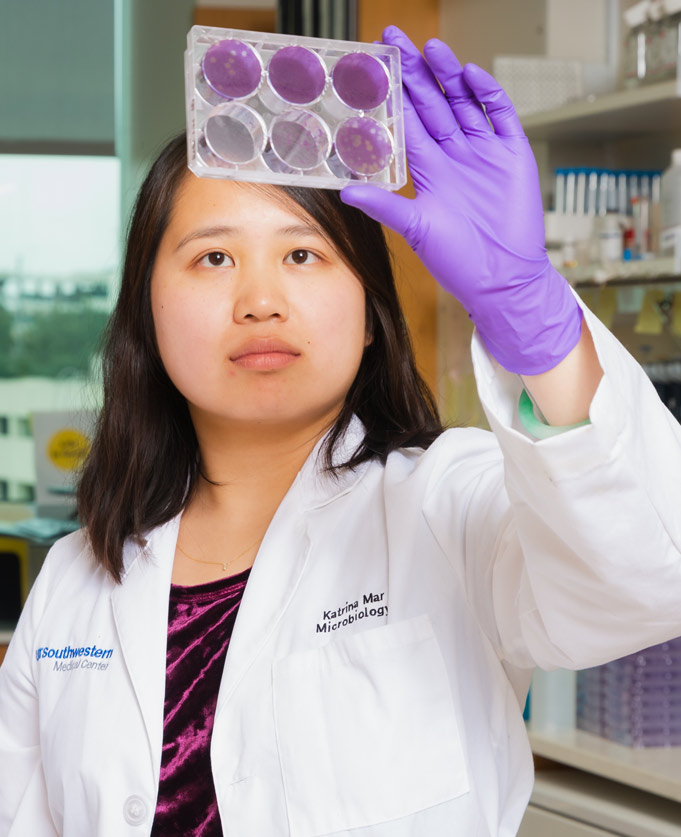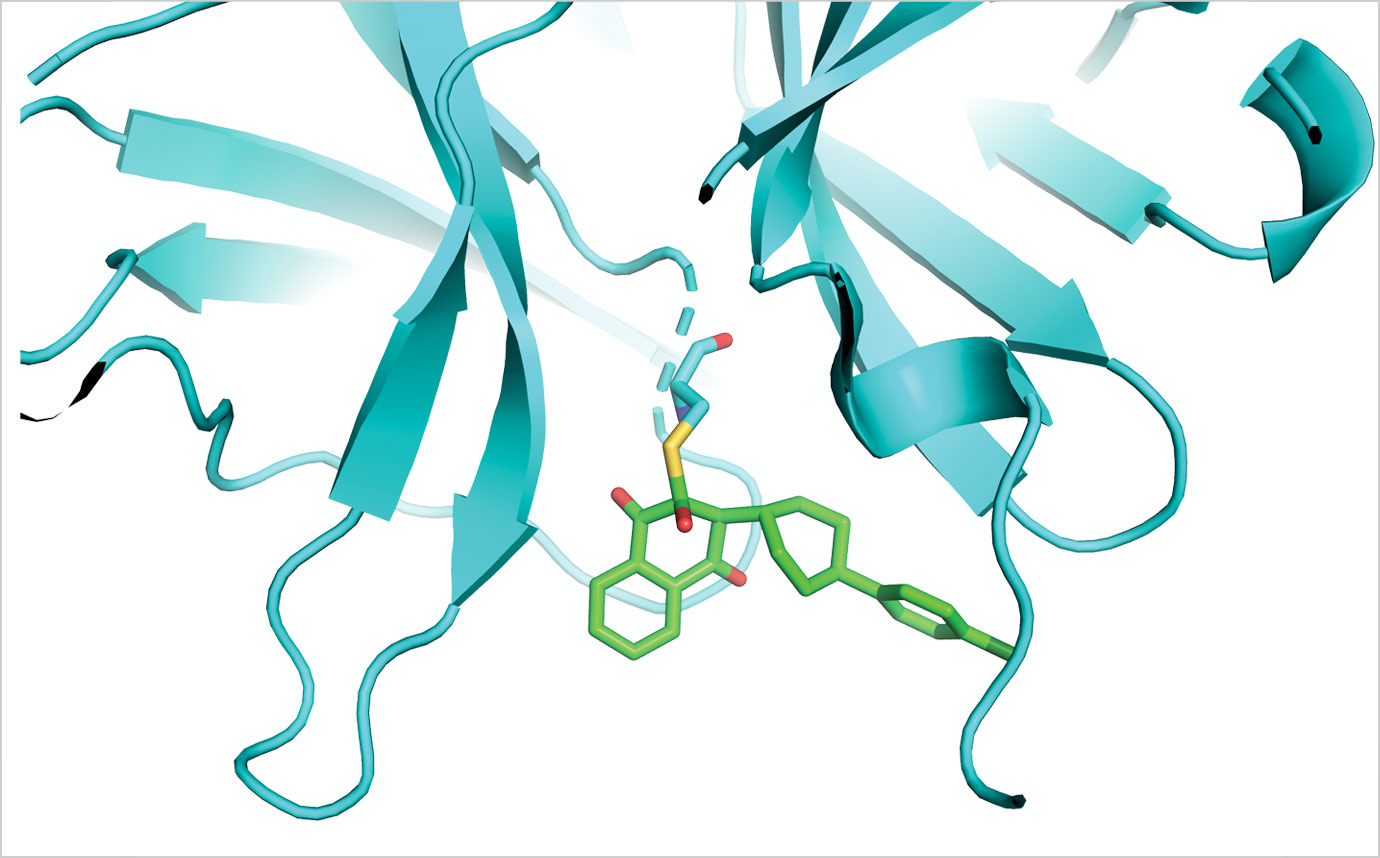Battling the unseen enemy
While pandemic rages, researchers search for COVID-19 treatments that will save lives, reduce suffering

As the COVID-19 pandemic spread across the globe early this year, microbiologist Dr. John Schoggins was completing a coronavirus study he had started more than two years ago.
Working with researchers in New York and Switzerland, the UT Southwestern scientist and his collaborators were focused on how the protein LY6E inhibited infection from coronaviruses such as SARS (severe acute respiratory syndrome) and MERS (Middle East respiratory syndrome). Just before UTSW suspended most research operations as shelter-in-place orders were enacted in mid-March, the group confirmed that the protein has a similar effect on SARS-CoV-2, the virus that causes COVID-19.
Meanwhile, with the number of cases increasing across the U.S., Dr. Hesham Sadek pulled together a team of structural biologists and medicinal chemists to conduct computational studies to identify Food and Drug Administration-approved drugs that might be able to stop SARS-CoV-2 from replicating. The UTSW group focused on agents that could affect the coronavirus’s main protease, an enzyme involved in replication of the virus.

Before long, Dr. Schoggins would convert part of his lab to testing whether the drugs identified by Dr. Sadek’s team would slow or stop the virus. Researchers donned protective gloves, gowns, and respirators to work with the live virus in the lab’s small level 3 biohazard facility. By May, the team would post a paper identifying three drugs that blocked production of the SARS-CoV-2 virus in human cells.
Other UT Southwestern researchers used high-performance computers to investigate the structure of the coronavirus and to identify targets for vaccines. Together, they are part of a race by scientists around the world to find ways to thwart the effects of the deadly virus and save lives. By mid-August, COVID-19 had infected nearly 21 million people and killed more than 750,000 worldwide.
“We’re trying to see if we can do anything to help,” says Dr. Schoggins, Associate Professor of Microbiology.
From influenza to coronavirus
Dr. Schoggins’ path to coronavirus research started a decade ago when he was a postdoc in the lab of Dr. Charles Rice at The Rockefeller University. Dr. Schoggins developed a screen for antiviral, interferon-stimulating genes and found one, LY6E, that actually enhanced influenza infection.
“We thought this was weird, so we pursued it,” says Dr. Schoggins, who joined the UT Southwestern faculty in 2012. In 2018, the researchers published a paper in Nature Communications explaining the mechanism by which the LY6E gene enhances infection by the influenza A virus.
“Fast-forward a bit and working in collaboration with groups in New York City and Switzerland, we stumbled on the surprising finding that LY6E potently inhibits coronaviruses – completely opposite to the effects the gene has on influenza,” he says.
That finding was made by Dr. Stephanie Pfaender, a postdoctoral researcher in the Swiss lab of Dr. Volker Thiel, one of the world’s leading experts on coronavirus biology. She was visiting the Rice lab to use the screening technology developed by Dr. Schoggins.
“We’re trying to see if we can do anything to help.”
— Dr. John Schoggins
Dr. Schoggins has concentrated his research on understanding the mechanisms by which the innate immune system responds to viral infection.
“When we learned that LY6E did the opposite of influenza with coronavirus, we were immediately intrigued, particularly because we had already developed an animal model to study the role of LY6E during viral infection,” Dr. Schoggins says.

The Schoggins, Thiel, and Rice labs began to further study the LY6E protein. They determined that the protein inhibited the two coronaviruses implicated in the earlier SARS and MERS outbreaks. When the SARS-CoV-2 pandemic erupted in January, the Thiel lab began seeking a human sample of the new virus. Within weeks, Dr. Thiel got a sample and his lab confirmed that the LY6E protein also inhibited the virus that causes COVID-19.
During that time, Dr. Katrina Mar, a postdoctoral fellow in the Schoggins lab, conducted experiments on the LY6E gene’s function using the UTSW mouse model to show that the LY6E mouse protein is crucial for protecting immune cells from infection.
In the absence of LY6E, immune cells – such as dendritic cells and B cells – become more susceptible to infection and their numbers drastically decrease. This loss makes it harder for the immune system to fight off the infection, which worsens the disease, Dr. Schoggins says.
The international team posted its results March 7 on bioRxiv, an online preprint server that reports studies prior to peer review, as well as in another article published July 23 by Nature Microbiology.
The hunt for effective drugs
Developing new pharmaceutical agents can take months or years. With the urgent need for drugs to treat COVID-19 growing daily, Dr. Sadek’s team reasoned that some already approved drugs might be able to target vulnerable parts of the novel coronavirus.
To test this idea, the group initially performed a computer-based study to examine which drugs might be useful. The team focused on SARS-CoV-2’s main protease, an enzyme involved in viral replication. Scientists elsewhere had elucidated its structure and hypothesized that a drug that strongly attaches to its binding pocket could block its function and leave the virus unable to multiply.

To identify drug candidates, the researchers used a computer program that structurally matched all FDA-approved drugs to the enzyme’s binding pocket. They then manually examined which drugs might forge strong chemical bonds with the pocket once inside.
Their top hits, reported on the chemRxiv preprint server, include several antiviral drugs known to work by targeting proteases, including some that were already being tested for action against COVID-19. Surprisingly, they also identified a handful of substances far afield of antivirals. These included the ACE inhibitor moexipril. One of the strongest hits was for a cholesterol-lowering drug, rosuvastatin. Two others that were prominent in the screen: an anti-asthma drug (montelukast) and the antihistamine fexofenadine, which has a boxed warning for possible mental health side effects.
But this was strictly a computational study. To see which approved drugs might arrest SARS-CoV-2, the Schoggins lab tested two dozen drugs against the coronavirus. The researchers first infected a line of nonhuman primate cells traditionally used to study viruses with SARS-CoV-2, then treated them with solutions containing various concentrations of the drugs. They next determined the level of virus in the cells to see how well it was replicating. The drugs were subsequently tested in human cells infected with the virus.
On May 14, the UTSW researchers reported that three of the drugs effectively stemmed viral replication in doses safely used to treat other diseases: atovaquone, used to treat malaria and now effective against toxoplasmosis, babesiosis, and Pneumocystic pneumonia; mebendazole, used to treat several parasitic worm infections; and ouabain, a naturally occurring compound used in some parts of the world to treat heart failure.
Dr. Sadek says atovaquone is most promising. It is predicted to covalently attach to the protease binding pocket, has previously been reported to have antiviral activity against other RNA viruses, and has a long history for treating infectious diseases that affect the lungs. By late July, a clinical trial to test the effectiveness of atovaquone on COVID-19 patients was launched at UT Southwestern’s William P. Clements Jr. University Hospital.
“Repurposing these FDA-approved drugs could be a fast way to get treatment to patients who otherwise have no option,” says Dr. Sadek, Professor of Internal Medicine, Biophysics, and Molecular Biology.
Dr. Sadek holds the J. Fred Schoellkopf, Jr. Chair in Cardiology.
Dr. Schoggins is a Nancy Cain and Jeffrey A. Marcus Scholar in Medical Research, in Honor of Dr. Bill S. Vowell.

